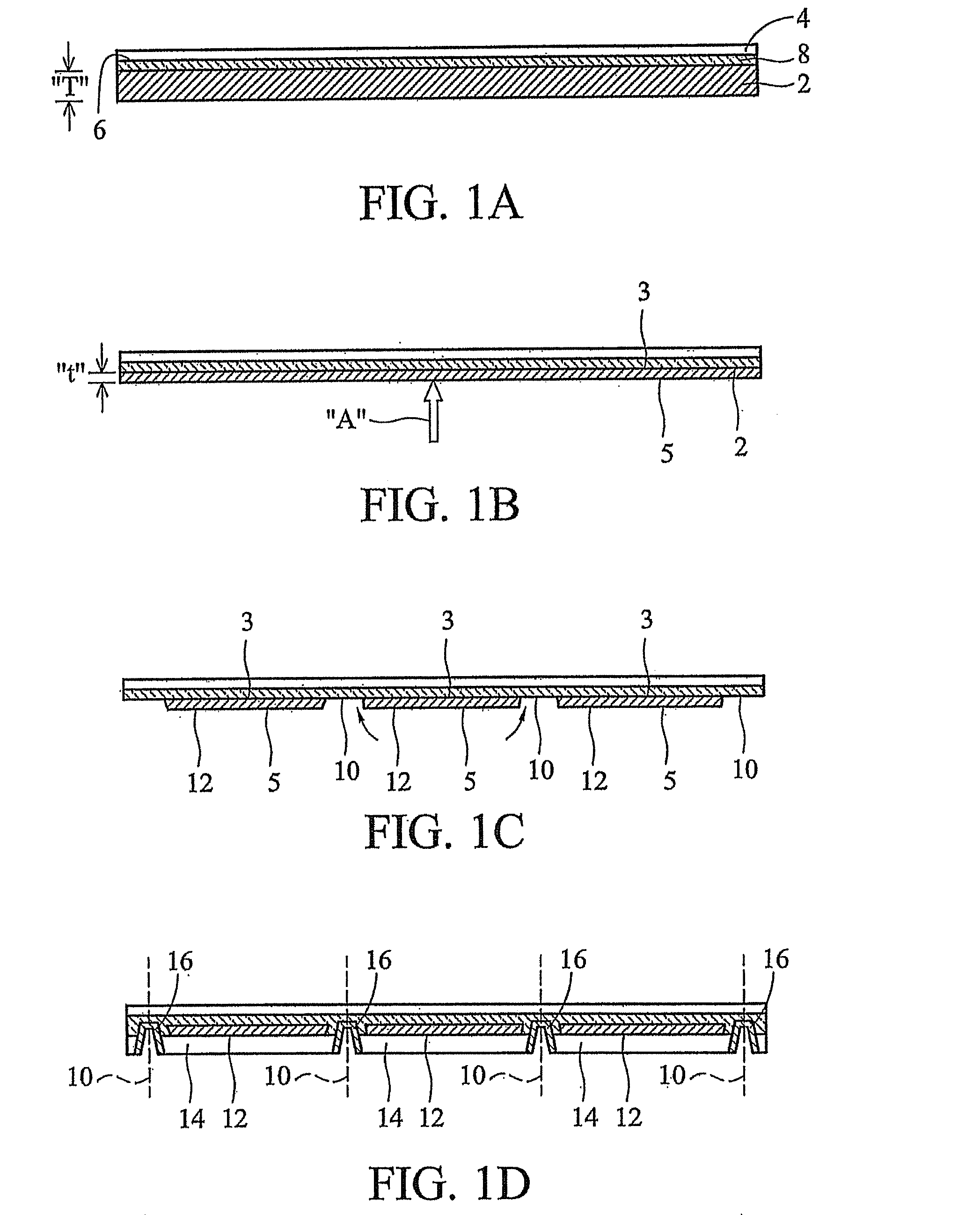Methods of avoiding wafer breakage during manufacture of backside illuminated image sensors
- Summary
- Abstract
- Description
- Claims
- Application Information
AI Technical Summary
Benefits of technology
Problems solved by technology
Method used
Image
Examples
Embodiment Construction
[0017]According to an embodiment of the present invention, disclosed herein is a method for reducing breakage of semiconductor wafers that presently occurs during the wafer thinning process associated with fabricating BSI CMOS devices. Specifically, a first example discloses trimming away a perimeter edge of the wafer prior to thinning the wafer. This trimming process may be implemented either before or after the wafer is bonded to a carrier substrate.
[0018]Referring to FIGS. 1A-D, an exemplary process for manufacturing a CMOS BSI imaging chip is shown. FIG. 1A shows a silicon wafer 2 bonded to a carrier substrate 4, which may be silicon, glass or other appropriate material. The wafer 2 may have a plurality of CMOS devices formed on one side, referred to as the “active surface”6. In the illustrated embodiment, the carrier substrate 4 is bonded to the wafer 2 such that the active surface 6 facing up toward the substrate 4. The carrier substrate 4 may be coated by an adhesive layer 8,...
PUM
 Login to View More
Login to View More Abstract
Description
Claims
Application Information
 Login to View More
Login to View More - R&D
- Intellectual Property
- Life Sciences
- Materials
- Tech Scout
- Unparalleled Data Quality
- Higher Quality Content
- 60% Fewer Hallucinations
Browse by: Latest US Patents, China's latest patents, Technical Efficacy Thesaurus, Application Domain, Technology Topic, Popular Technical Reports.
© 2025 PatSnap. All rights reserved.Legal|Privacy policy|Modern Slavery Act Transparency Statement|Sitemap|About US| Contact US: help@patsnap.com



